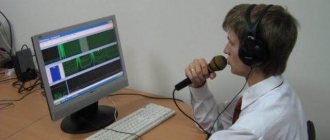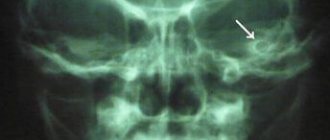Speech impairment in children is a serious problem that parents should pay attention to in time and take appropriate measures. Stuttering (in medicine the term “logoneurosis” is used) can occur in children at an early age. Treatment of the disease is carried out by specialists in a comprehensive manner: speech therapy, psychotherapeutic techniques and even hypnosis are used. Children who stutter need a massage to reduce facial muscle tension, improve the functioning of the speech center, and generally improve health.
The main causes of logoneurosis
Stuttering is a disorder of fluency of speech. During illness, the main thing is that the child does not develop logophobia (fear of expressing his opinion), since it will increase the severity of the disease and complicate treatment. Hereditary predisposition also influences the development of logoneurosis. Experts diagnose speech defects three times more often in boys than in girls.
Causes of stuttering:
- acute or chronic stress;
- genetic predisposition;
- damage to the central nervous system;
- complications after endocrine and infectious diseases;
- predisposition to epiactivity;
- early development or delayed psychomotor development;
- imitating a stuttering child (due to such “games” healthy children can develop a permanent speech defect);
- the child being in constant fear, misunderstanding on the part of the parents, lack of love and affection.
Doctors have found that choleric people are more prone to stuttering than phlegmatic people. The disease in children is often provoked by their parents: due to strict upbringing and increased demands on the baby, logoneurosis can develop
Doctors treating speech neurosis
Therapy for speech neurosis in childhood should be carried out with four specialists at once: a speech therapist, a psychologist, a psychotherapist and a pediatrician.
The pediatrician treats concomitant pathological processes, pays attention to strengthening the immune system, preventive measures, and advises parents if their children complain about their health. Physiotherapeutic manipulations (electric sleep and massage) are effective for the disease. Doctors often recommend effective logomassage for stuttering, breathing exercises, and psychological training.
The psychologist seeks an approach to the child and learns about his fears. Only a doctor can examine the patient's mental health and find out the causes of stuttering. At an early age, consultations with a psychologist are carried out under the supervision of parents.
The speech therapist asks the child to undergo a series of tests and do several test exercises. Classes with this specialist will allow you to reduce the number of cramps in the laryngeal and articulatory muscles in a short period of time.
An appointment with a psychotherapist is needed so that the child can get rid of fear and discomfort while communicating with his peers (due to stuttering, the child often develops complexes). Consultations with a doctor will help you get rid of complexes and feelings of inferiority.
Self-massage
A specialist can teach children self-massage skills. This doesn't require much effort. Preschoolers are taught in front of a mirror, shown an example of an action and asked to repeat:
- The first exercise is to gently stroke your cheeks with your palms, working from your nose to your ears. You can stroke the head, going lower from the hair.
- The second exercise is to run your fingers with pressure from the middle of the forehead to the temples, as if drawing paths. You can draw a “Christmas tree”.
- The third exercise is tapping the forehead and cheeks with pads. There may be more exercises. The complex is compiled by a speech therapist based on the individual characteristics of the child.
Krupenchuk has her own method. She improved the Dyakova complex. Regular spoons are used for massage - this is perceived more positively by the child.
The process can be combined with games. In this case, it will be more interesting for children to complete the tasks of the speech therapist. As an incentive, you can give a sticker or the opportunity to choose a game.
The benefits of massage for stuttering
A special massage of the head, cervical region, collar area, back, chest and shoulders has a positive effect on articulation. The benefits of this procedure are visible after several sessions, but sometimes 1-2 courses of treatment are required.
The advantages of massage for logoneurosis are:
- activation of metabolic processes in the body;
- increase or decrease in muscle tone;
- improving blood circulation;
- increased metabolism;
- formation of correct speech skills;
- prevention of disease relapse;
- complete elimination or minimization of speech defects.
The procedure has no contraindications, and having mastered the correct massage technique, parents will be able to do it to their child at home.
Stuttering in a 3 year old child
If you notice that your 3 year old child is stuttering, you should follow these instructions:
- It is necessary to make sure that the child speaks less, try not to ask him unnecessary questions - to which you want to hear the answer! If a child asks you about something, you need to answer him;
- if you have the opportunity to refuse to attend kindergarten, be sure to do so and avoid crowds of people;
- keep your child busy with board and other entertaining games, they perfectly develop fine motor skills and calm the nervous system;
- Be sure to contact a good children's speech therapist and neurologist.
The main thing is not to overload the child - this can negatively affect him, it is necessary to take the necessary measures from the first manifestations.
The most common types of massage for children's stuttering
Speech therapy massage of certain areas of the body for speech impediments is performed by an experienced massage therapist using certain techniques and techniques. Speech therapy massage for stuttering in children is complemented by physiotherapeutic and drug treatment.
There are two main types of therapeutic massage for logoneurosis: segmental and acupressure.
With segmental massage, the speech therapist acts on a specific muscle that is responsible for speech activity. It is advisable to carry out the manipulation daily for 14-20 days. The duration of the course directly depends on the symptoms, age of the patient and diagnosis. One doctor’s appointment takes from 5 to 20 minutes.
Acupressure massage is not inferior in effectiveness to segmental massage. The advantages of such an effect on the child’s body include relaxation of the speech center and the removal of excess excitability. With the help of procedures, speech impulses of the nervous system are restored.
The advantage of the massage treatment method is its ease of implementation. Parents, after mastering the technique and techniques of massage, can give it to their baby in the comfort of their own home. It will take 1 to 3 years for children to fully recover.
Modern methods of stuttering correction
The formation of a modern integrated approach to the correction of stuttering was preceded by the development of various methods and ways to overcome this disease.
Despite the centuries-long history of studying and treating speech disorders, stuttering is one of the diseases whose mechanisms have not yet been fully studied and explained. It should be noted that the mechanisms of stuttering are heterogeneous. In some cases stuttering is interpreted as a complex neurotic disorder, which is the result of a “collision” of nervous processes in the cerebral cortex, a violation of cortical-subcortical interaction, a disorder of the single auto-regulated tempo of speech movements (voice, breathing, articulation).
In other cases - as a complex neurotic disorder, which was the result of a fixed reflex of incorrect speech, which initially arose as a result of speech difficulties of various origins.
Thirdly, as a complex, predominantly functional speech disorder that appeared as a result of general and speech dysontogenesis and disharmonious personality development.
Fourthly, the mechanism of stuttering can be explained by organic lesions of the central nervous system. Methods for overcoming stuttering were developed by the authors based on their different understanding of this speech disorder. The numerous methodological approaches to overcoming this pathology are explained by the complexity of its structural manifestations and the insufficient level of knowledge about its nature. The need for complex interventions in the correction of stuttering was pointed out by I.A. Sikorsky (1889) and I.K. Khmelevsky (1897). They expressed views that have not lost their significance today. So, I.A. Sikorsky included speech gymnastics, psychotherapeutic, pharmaceutical treatment and motor exercises in the treatment of stuttering.
Based on the teachings of domestic physiologists I.M. Sechenov and I.P. Pavlov and their followers, scientists and practitioners have defined a modern comprehensive approach to overcoming stuttering. L.Z. Andronova (1993), N.M. Assatiani (1980), V.A. Gilyarovsky (1932), K.M. Danilov and I.V. Cherepanov (1970), V.S. Kochergina (1960), V.A. Kurshev (1973), employees of the laboratory of the Research Institute of Defectology under the direction of R.E. Levina (1963), S.S. Lyapidevsky (1960, 1963), L.Ya. Missoulin (1988), Y.B. Nekrasova (1984), V.I. Seliverstov (2000), M.V. Serebrovskaya (1925), N.P. Tyapugin (1966), Yu.A. Florenskaya (1949), M.E. Khvattsev (1959), V.M. Shklovsky (1994), A.V. Yastrebova (1963) and others with their research contributed to the development of a therapeutic and pedagogical approach to overcoming stuttering. In the works of many authors there are instructions on some specific issues of eliminating stuttering (G.I. Angushev, 1974; S.Yu. Benilova, T.S. Reznichenko, 2001; T.G. Vizel, 1997; V.A. Kovshikov, 1976 ; Y.I. Kuzmin, 2000; V. Adamczyk, 1969; G. Andrews et al, 1982; S. Van Riper, 1982, etc.). In a number of foreign works we find interesting observations and recommendations regarding the correction of stuttering. Many clinical researchers come to the conclusion about the need for comprehensive comprehensive treatment of this speech defect, which includes speech therapy exercises, drug therapy, as well as targeted psychotherapeutic influence on the patient’s personality, helping him adapt to the conditions of the social environment (KP Bekker, M. Sovak, 1984; O.A. Bloodstein, 1995; M. Opslowsh et al., 1997; M. Seetan, 1962).
Scientific research based on experimental and clinical-psychological studies of people who stutter has made it possible to formulate valuable theoretical and practical principles and to determine the place of speech therapy and various therapeutic measures in a comprehensive treatment system. At present, there is no doubt about the advisability of a differentiated and individual approach to stutterers of different age categories, taking into account the complex structure and etiopathogenesis of speech disorders .
It should be noted that until now, researchers have expressed different and sometimes directly opposite points of view on this speech pathology. Most researchers and practitioners working on this problem are still of the opinion that it is necessary to comprehensively study and treat this speech disorder, and to select certain methods of complex therapy. In these conditions, there is a need to search for common conceptual foundations for the interaction of specialists and coordinate their activities.
In the rehabilitation of people who stutter, an integrated approach is currently used, since impaired speech fluency is associated with a number of reasons, both biological and socio-psychological.
Firstly, it is a combination of correctional pedagogical and therapeutic work, which is aimed at normalizing all aspects of speech, motor skills, mental processes, educating the personality of a stutterer and improving the health of the body as a whole. Secondly, an integrated approach includes a system of clearly demarcated, but coordinated means of influence by different specialists. This involves the joint work of a doctor, speech therapist, psychologist, rhythm specialist, functional diagnostics specialist, physiotherapist and social worker. Currently, the specialized literature presents both some methods of speech therapy work with people who stutter (covering only certain aspects of the problem that interests us), as well as a number of complex rehabilitation systems, the conceptual basis of which is to take into account the characteristics of the patient’s psychophysical development, the etiology, mechanisms and symptoms of the disorder, including speech disorders. , psychological, motor, age characteristics of this patient population.
According to L.I. Belyakova, E.A. Dyakova (1998); V.A. Kovshikova (1976); M.I. Lokhova, Yu.A. Fesenko (2000); V.M. Shklovsky (1994) and others, when developing rehabilitation measures, the nature of the primary damage to the nervous system in various forms of stuttering should be taken into account. In the neurotic form of stuttering, therapeutic interventions should be aimed at reducing the excitability of emotiogenic brain structures, which can be achieved through a combination of medications and various psychotherapeutic techniques (stress therapy, hypnosis, autogenic training). Speech therapy classes against this background are much more effective.
People who stutter with a neurosis-like form of speech defect require long-term correctional and pedagogical interventions that promote the development of regulatory functions of the brain (stimulation of attention, memory and other mental processes), and special drug treatment aimed at reducing the consequences of early organic brain damage. Speech therapy sessions for this group of stutterers should be regular over a considerable period of time. The complex of therapeutic and psychological effects necessarily includes methods aimed at rhythmizing movements.
Thus, according to the authors, in cases where the neural mechanisms of stuttering are associated with organo-functional damage to the motor structures of the brain, normalization in the functional speech system should occur through the development of new speech motor reflexes, while in neurotic stuttering treatment is aimed at restoration and strengthening of existing speech motor automatisms acquired in early speech ontogenesis. In connection with the tasks of diagnosis and pathogenetic substantiation of complex logotherapy V.M. Shklovsky (1994) proposed a classification of patients with stuttering, in which, along with the manifestation of speech pathology itself, the degree of disorganization of personality relationships is taken into account. This differentiated approach to adult stutterers made it possible to clearly define the place of speech therapy and various psychotherapeutic measures in the complex system of stuttering treatment . The complex medical and pedagogical system for the treatment of stuttering developed by the author most fully takes into account the various aspects of the clinical and psychological picture of stuttering. Such an assessment of the etiopathogenetic basis of stuttering largely reveals the essence of the problem and directs specialists to a comprehensive approach in the correction of speech disorders. In our opinion, based on the focus of this manual, we should dwell in more detail on the features of correctional and pedagogical work in the treatment of stuttering .
Since people who stutter have specific disturbances in the fluency of speech, features of its tempo-rhythmic organization, as well as changes in the motor sphere relating to dynamic praxis and musical-rhythmic abilities, this necessitates the formation of a rhythmic-intonation organization of oral speech, which is one of the important links in a complex method of stuttering correction.
Researchers and practitioners have noticed that rhythmization of movements leads to normalization of fluency of speech. To develop unity of speech in people who stutter, various methods are used to rhythmize speech: pronouncing words, phrases to music, a metronome, singing, training speech in the process of speech therapy rhythms, synchronizing speech with the movements of the fingers of the leading hand, etc. Classes with musical accompaniment with rhythmic movements of the arms, legs, torso, and subsequently the combination of these movements with singing, melodic recitation, reading poetic and prose texts optimize the flow of speech utterance (L.Z. Andronova, 1993; L.I. Belyakova et al. , 1992; G.A. Volkova, 2003; E.V. Oganesyan, 1981; N.A. Rychkova, 1999).
According to N.A. Vlasova (1959), overcoming stuttering is most effective in the process of gradually developing speech from conjugate pronunciation to normal speech. IN AND. Rozhdestvenskaya (1960) offers a system of relaxing, breathing, and vocal exercises in a playful form, as well as tasks for developing speech coordination with various movements aimed at correcting the tempo of speech. The author attaches leading importance to this aspect of the work. Developing the above provisions, E.Yu. Rau (1994) examines the dependence of the severity of stuttering on communication conditions and the ways in which stutterers adapt to difficult communicative situations.
G.A. Volkova (1979, 1994) believes that when working with preschool children attending speech therapy kindergarten, stuttering must be overcome through play activities. The author emphasizes that gaming activities make it possible to create various situations that reflect real events and relationships between people. Participation in a variety of game situations, playing roles from secondary to leading, develops the necessary personality qualities in people who stutter. In the process of differentiated use of play activities, the personal deviations of stuttering children are corrected and, on this basis, their speech is developed.
N.A.’s methodology is based on slightly different theoretical positions. Cheveleva (1978). The author believes that it is necessary for stutterers to develop only independent speech (situational and contextual) in the process of manual activity. The author does not consider it necessary to use breathing, vocal and other exercises aimed at correcting the rate of speech. ON THE. Cheveleva emphasizes that a calm, somewhat slow pace of making crafts normalizes the rate of speech of preschoolers and schoolchildren. Speech education using this method takes place in several stages: propaedeutic stage, accompanying speech based on visual objects and actions, final speech about a completed action, preliminary speech without reliance on a past action, consolidation of active speech or contextual speech.
M.I. Gerkina (1972), as well as later E.M. Pellinger et al. (1995), taking into account the situational nature of stuttering and the disruption of the communicative function of speech in children, proposes a method of story games. The correction begins with playing out stories with an imaginary interlocutor, which, according to the author, gives the installation of correct speech behavior in real situations of communication with peers. At the next stage, everyday themes are played out, and at the end of the course they move on to role-playing games. The speech therapist suggests the plot of the game, directs the action, and stimulates speech activity. A.V. Yastrebova (1999) developed a system of correctional education for stuttering schoolchildren, which provides, in the process of speech therapy classes, the formation of their free communication skills, the development of observation, sustained attention, and the ability to switch quite easily and quickly from one type of activity to another.
A.I. Bogomolova (1977) argues that the importance of neurotic manifestations in people who stutter is exaggerated. According to the author, as speech improves during speech therapy sessions, secondary neurotic layers disappear. Hence the focus of speech therapy techniques based on scanned speech exercises, which should be accompanied by conducting movements of the patient’s hand. It is difficult to agree with the author’s statement that the characteristics of the course of the disease in preschoolers and adolescents are based only on the long experience of stuttering in children of senior school age.
T. Verendes (1963) in his method of overcoming stuttering suggests using the “scene test” of G. Staabs. In the scenes (games) that the child builds with the help of dolls, the hidden conflict situation is revealed and at the same time mental tension is released. To enhance the impact and relieve psychophysical stress, the author suggests including autogenic training exercises and revealing subconscious experiences in hypnosis. Methodology V.I. Seliverstova (2000) is primarily designed for working with children in medical institutions. In the lesson plan proposed by the author, speech exercises become more complicated depending on the varying degrees of independence of speech, its preparedness, structural complexity, and the types of activities during which verbal communication occurs.
I.Yu. Abeleva (1969), as well as V.I. Seliverstov (2000), recommends starting work with preparatory exercises on speech technique: breathing, voice, articulation. Speech exercises for stuttering correction are based on the principle of gradually increasing the complexity of speech components. The literature on the problem of stuttering in adolescents and adults contains programs that highlight the most general views on eliminating stuttering. All modern systems of speech therapy classes with stuttering adolescents and adults are united by the presence in them (in addition to progressively more complex speech exercises) of various methods of psychotherapy, physiotherapy, and drug intervention.
The issue of using autotraining in the treatment of stuttering was developed by S.M. Lyubinskaya (1970), L.Ya. Missulovin (1988), Yu.B. Nekrasova, S.F. Orlovskaya (1966), V.M. Shklovsky (1979, 1994). What is common in the works of these authors is that autogenic training is recommended to be used in a complex of therapeutic and correctional measures along with other methods of psychotherapeutic influence.
The work of V.M. is specifically devoted to the issue of using various methods of group psychotherapy in the treatment of adults who stutter (discussion, nonverbal communication, projective drawing, sociometry, etc.). Shklovsky, L.M. Krolya, E.L. Mikhailova (1985).
One of the most famous methods of psychotherapy in the 50-70s, as B.D. points out. Karvasarsky (1990), is a group session of emotional stress therapy with elements of imperative suggestion according to K.M. Dubrovsky (1966). During the session, the patients’ negative emotions associated with fear of speech are contrasted with the life-affirming emotions of new psychological attitudes. In relation to stuttering, the technique was studied by Yu.B. Nekrasova (1984), which points to the possibility of changing the patient’s attitude towards suffering in a short period of time. In her opinion, the totality of mental states induced during a session of emotional stress psychotherapy causes new sthenic states in people who stutter: activity, readiness to overcome the psychological barrier and speak in extreme conditions.
V.M. Shklovsky (1994) introduced a session of suggestion while awake into the course of complex treatment of stuttering as a powerful psychotherapeutic technique aimed at eliminating patients’ fear of speech in emotionally significant situations. He also described in detail the methodology for conducting sessions, which provides for long-term consolidation of the results achieved during the session. Speech exercises in systems of logopsychotherapeutic sessions with people who stutter are based on methods generally accepted in speech therapy, taking into account the age characteristics of patients.
Many researchers who have studied tempo-rhythmic speech disorders (in particular, stuttering) note the important role of changes in the prosodic side of speech in the structure of speech disorders (Max L., Cariso A., 1997; Opslow M., et al., 1997). Researchers indicate that these characteristics can change under the influence of training.
According to M. Zeetan (1962), consciously slowing down the rate of speech is the basic principle of all corrective measures, despite their apparent diversity. When speech slows down in people who stutter, the correct coordination of respiratory, vocal and articulatory movements is established, and muscle tension and cramps are significantly reduced.
Statistical analysis of various treatment programs by G. Apdrews et al. (1982, 1983) is quite consistent with this view. The authors believe that the most favorable results are achieved by those stuttering correction programs that involve training in slow speech. Some researchers consider slowing down the rate of speech not only necessary, but also a sufficient therapeutic effect (R. A. Resick, P. Wendiggensen, S. Ates, V. Meyer, 1975). I.A. Povarova (2000, 2001, 2002) believes that a violation of the tempo-rhythmic parameters of speech is one of the leading components in the structure of stuttering and is characterized by polymorphism, persistence and variability of manifestation. Features of tempo-rhythmic characteristics of speech in people who stutter depend on the form of speech, the severity of the disorder and individual psychological status and are manifested in changes in the duration of structural segments of the speech signal and their coefficient of variation. The dynamics of these indicators makes it possible to predict the result of speech therapy and the choice of correction methods. It should be noted that an integral part of every speech therapy method for stuttering correction is work on intonation. Some authors consider it necessary to develop emotional, expressive speech in people who stutter from the very first lessons. This approach is followed by M. Zeman (1962), who has a negative attitude towards monotonous and monodynamic speech.
AND I. Yastrebova (1962, 1999) suggests focusing work on intonation on developing the ability to listen to someone else’s speech and convey the appropriate intonation in one’s own speech. Expressive speech requires the stutterer to be able to master different speech rates and voice modulations. At the initial stages of correction, students find it difficult to transfer the skill developed in classes in conditions of natural communication, therefore, a gradual path to mastering different tempos of speech is necessary for stutterers. Some experts suggest paying attention to working on intonation at the end of a course of speech therapy classes (A.G. Shembel, 1961), which contradicts the holistic formation of a functional speech system in the process of speech therapy work. Other authors recommend that stutterers use monotonous, monodynamic speech to help overcome speech cramps and ensure unity of speech. In this case, it is difficult to disagree with A. Liebmann (1901), who noted that artificial speech attracting the attention of others can “worse” a speech disorder. However, if we consider monotony as a means of reducing seizures, then it is probably necessary to use it at the first stage of speech therapy classes. The positive properties of monotony were also pointed out by I.A. Sikorsky (1889). The author found that monotonous speech is devoid of natural rises and falls in the tone of the voice. Such speech is one of the means that reduce stuttering very significantly; the transformation of natural speech into monotonous simplifies speech and facilitates the task of articulation for a stutterer.
Recommendations for improving speech tempo for both children and adults who stutter are contradictory. N.P. Tyapugin (1966) points out that treatment of stuttering at any age and in any period begins with re-education of the speech of a stutterer based on teaching him somewhat slow and smooth speech, which has regulatory significance. According to J. Brady (1969), by slightly slowing down the rate of speech, convulsions can be eliminated in almost any stutterer. The effectiveness of speech slowing techniques is also noted in the work of R. Resick (1975). However, there is another opinion regarding the formation of speech tempo in people who stutter. For example, L.N. Meshcherskaya (1982) believes that all known methods of eliminating stuttering are based on slowing down the rate of speech. The unnatural slow pace of speech and the fear of ridicule from others are the reasons for violating the recommended speech regime, which leads to relapses of stuttering. The author suggests working to overcome stuttering by forming a normal or close to normal speech rate.
Of interest is the opinion of individual authors regarding the tactics of forming the tempo of speech in people who stutter. Their recommendations boil down to the fact that after practicing speech skills using a slow speech rate, work should be done to speed it up. M. Seeman (1962) pointed out that all therapeutic exercises for stuttering are based on a single principle - a conscious change in the accent and tempo of speech in the first period of treatment and a gradual transition to normal speech.
The most detailed approach to overcoming stuttering in adult stutterers is described in the work of G. Apdrews, R. Howie (1981). Initial training is carried out at a speech rate of 50 syllables per minute, which, according to the authors, is approximately a quarter of the standard rate and is the optimal speed at which stuttering rarely occurs. Then gradually (within a week) the speech rate of stutterers increases to the norm. T.G. Wiesel (1997) believes that with all types of work to correct the fluency of phrasal speech, its pace should be normal and take into account the individual characteristics of the speed of pronunciation. At the same time, the author notes the need to gradually complicate the rhythmic and semantic structure of the phrases being practiced in accordance with linguistic patterns.
L.Z. Andronova (1993), taking into account the need to slow down the speech rate of people who stutter, believes that it cannot be imposed forcibly. Therefore, at the initial stage of treatment, she considers it appropriate to introduce syllable-by-syllable speech with external support (rhythmization of speech with movements of the fingers of the leading hand). A number of studies have shown that instrumental interventions used to correct stuttering affect speech speed in different ways. Silencing speech with noise has little effect on the temporal characteristics of the speech of people who stutter (O.V. Wessart, 1983). A delay in acoustic feedback leads to a significant slowdown in speech and a significant reduction in the number of stutters (N.I. Zhinkin, 1958; Yu.I. Kuzmin et al., 1991). L.Ya. Missulovin (1988) determined the indications for the use of the AIR apparatus, based on the use of the effect of delayed acoustic feedback, and proposed a method for correcting the tempo and rhythm of speech in the course of complex treatment of stuttering; the level of signal delay is determined in each specific case individually.
I.V. Danilov and I.M. Cherepanov (1970) investigated the influence of different metronome rhythms on the speech of stutterers and found that with the “tonic form of stuttering” the maximum increase in speech speed (by 83%) occurs at a frequency of 1 Hz (60 metronome beats per minute), and with the “clonic form of stuttering” "—at a frequency of 2.17 Hz (130 beats/min). According to M.I. Lokhova and Yu.A. Fesenko (2000) with a mixed type of stuttering, maximum speech coherence is achieved at frequencies of 1.3-1.5 Hz (80-90 beats/min), which is consistent with the data of other authors (Demuth et al. 1981).
L.Z. Andronova, M.I. Lokhov (1983) understand stuttering in accordance with the concept of N.P. Bekhtereva (1988) as a stable pathological condition. They have developed a method for the treatment of stuttering, which involves the destabilization of a stable pathological speech system by means of photophonostimulation against the background of the administration of subclinical doses of etimizol, the formation against this background of new stable rhythmically controlled connections and the use of a new functional state of the brain in order to assimilate speech therapy (in particular, suggestive) influences for formation of a new speech system. The frequency of phonostimulation is combined with the frequency of photostimulation, which is selected based on the data of the EEG reaction of the rhythm assimilation of a given patient.
Researchers studied the effects of rhythmic photostimulation on the speech of people who stutter, which was significantly improved by photostimulation at low frequencies (1.2-2.3 Hz). These data were obtained in a study of adult stutterers (L.Z. Andronova, M.I. Lokhov, 1983; M.I. Lokhov, 1994). Artificial control connections formed by a combination of light and sound influences are supported using portable metronomes “Ri. According to the authors, the use of a metronome at a code frequency protects speech from breakdowns and reduces the number of relapses. In the process of mastering new speech stereotypes, the development of the articulatory apparatus, mastery of rhythmic syllabic speech, relaxation of the body muscles and articulatory apparatus, elimination of accompanying movements, and mastering of psychotraining exercises are carried out, including elements of autogenic training against the background of a given rhythm.
Some researchers note that the introduction of simple metronomic feedback at a certain frequency, without complex equipment for analyzing EEG rhythms, also produces a significant positive effect (Armsop et al., 1997; Christenfeld, 1996).
G.I. Angushev (1974), studying the role of voluntary control of performed activities, obtained experimental data indicating a hierarchy of levels of self-regulation. The author pointed out that the difference between people who stutter and people without speech pathology lies in the nature of the relationship between two levels of regulation: voluntary (consciously controlled) and involuntary (unconsciously controlled). In people who stutter, regulation is carried out at a higher level than in healthy people. As a result, the process of automation of activity is complicated, which causes instability of dynamic stereotypes formed during the correctional pedagogical process and requires regular exercises.
In the process of stuttering correction, the leading role belongs to training aimed at developing a new stereotype of speech production. The work is carried out using various technical means. In pedagogical practice, since the 60s of the 20th century, the method of biofeedback (BFB) began to be used. The biofeedback method, based on the body’s self-regulation mechanisms, leads to the establishment in the central nervous system of new functional connections necessary to obtain the desired effect, which are consolidated during the learning process. Using this method, people who stutter are able to independently control and regulate individual parameters of their functions (breathing, voice production, etc.). Biofeedback, based on the transformation of a speech signal into a visual image, is effectively used in the process of comprehensive rehabilitation of people who stutter and has a positive effect on the process of speech formation (T.K. Korolevskaya, 1996; O.S. Orlova, 2003; I.A. Povarova, 1995, 2003; A.A. Smetankin, 1999, 2002, etc.). The issue of the effectiveness of complex treatment of stuttering is covered in the works of G.A. Volkova (1983); L.S. Volkova, S.N. Shakhovskoy (2002); ON THE. Vlasova, K.P. Becker (1983); V.G. Kazakova (1973); V.A. Kovshikova (1972); V.A. Kursheva (1973); M.I. Lokhova (1994, 2000); IN AND. Seliverstova (2000); V.M. Shklovsky (1967, 1994) and many other studies.
The ambiguity of researchers' views on treatment results is due to different approaches to determining assessments and criteria for the effectiveness of correction of this speech disorder.
The effectiveness of stuttering correction is determined by a number of factors: • the nature of the defect and the severity of its symptoms (speech, motor and neuropsychic characteristics); • timing of the start of corrective action and its duration; • complexity of impact; • the adequacy of the chosen methods of correctional influence, taking into account the age and psychological characteristics of students, etc.; attitude towards learning. The high plasticity of the central nervous system, the choice of the right means and methods of influence, and other factors determine the generally favorable prospects for the process of stuttering correction.
Thus, in matters of overcoming stuttering, researchers still express different points of view, of which, in our opinion, the most correct seems to be the one that provides for an integrated medical, pedagogical and psychological approach to the problem of rehabilitation of people who stutter. The material is taken from the book by Povarova IA “Correction of stuttering in games and training.”
Modern methods, tools and techniques for speech therapy massage
Speech therapy massage for stuttering can be both the main treatment method and an auxiliary one.
Logomassage classification:
- traditional (during the manipulation, the specialist strokes, rubs and kneads the patient’s legs and arms);
- point (speech therapist acts on biologically active points);
- probe (carried out using instruments - probes);
- segmental-reflex massage (classical techniques and methods are used, the doctor massages certain segments and zones).
Logomassage is prohibited for herpes, gingivitis, stomatitis, enlarged lymph nodes, skin rashes, inflammation, conjunctivitis, somatic and infectious diseases
Speech disorders and posture
Static and dynamic disorders of a child’s posture can most directly lead to muscle disorders in the facial area. For example, dysfunctional habitual head tilt in babies is associated with speech, swallowing and breathing disorders. Disorders in the lumbar spine lead to persistent articulation disorders and tongue dysfunction. Functional asymmetry of the upper cervical spine is associated with impaired lip motility. To ensure normal physiological development of the orofacial region and the growing spinal column, it is important to screen children for postural disorders in a timely manner.
How to do acupressure in children who stutter
During acupressure for stuttering, the doctor presses with the pads of his fingers on certain parts of the body (performed in a circular motion). During the manipulation, points located on the back, legs and face are activated. Doctors call acupressure soothing because of the smoothness of the pressure.
The masseur performs a massage with three fingers: thumb, middle and index. After pressing, rotational movements are made for half a minute (the pressure gradually increases).
When massaging near the mouth, you should ask the child to open it slightly. When treating the larynx, the baby will need to pronounce vowel sounds. The main goal of acupressure is maximum relaxation. It is not recommended to eat or drink before the procedure.
Bioactive pressure points for acupressure for stuttering
When exposed to bioactive points during logoneurosis, the child’s psycho-emotional health is normalized, the muscles that are responsible for the respiratory, vocal and articulatory apparatus relax.
Nei Guan points are located in the wrist area.
The Tian Jing points are located in the elbow area.
"He-liao", "Ying-xiang" and "Show-go" are on the face.
The points “Tzu-san-li” and “Du-bi” are concentrated near the knees.
On the back there are points “Fei Shu”, “Hsin Shu”, “Tian Liao”, “Fen Men” and others.
Point impact
When a child begins to stutter, acupressure is indicated. Rules for manipulation:
- light touches, without strong pressure;
- impact on one point takes 2–3 seconds, no more;
- more than 4 active points are not worked on during a session;
- the number of segments worked increases by 4 points with each subsequent session;
- massage is not performed if the child is irritated or crying - he should feel comfortable;
- manipulations are carried out with clean, warm, dry hands;
- The massage begins an hour after eating and the baby is not allowed to eat for another hour after the procedure; water at room temperature is required afterwards.
Acupressure is often combined with segmental techniques. Having previously relaxed the tense muscle, they begin to apply pressure to the points. The first session lasts 5 minutes. Gradually the time is increased to 20 minutes.
During the massage, the specialist monitors the patient’s condition. If he feels bad or nervous, the massage is stopped. If manipulations are carried out on school-age children, they are suspended from school for 1–2 weeks and social communication is limited. The complex provides classes with a speech therapist and homework assignments. 2 hours are allotted for this.
Scheme of acupressure facial massage
The procedure is performed using the fingertips. The patient is in a supine position or sitting in a comfortable chair with a high back. The pads of the index fingers are placed in the center of the forehead, drawn to the sides above the eyebrows, moving towards the temples. The manipulation is performed 2–3 times. Next, the fingers are placed on both sides of the bridge of the nose, opposite the inner corners of the eyes. Lightly press on the points and hold for 2-3 seconds.
Then they move under the eyes, along the bones to the temples, rise, pass under the eyebrows and return to the starting point. Make 3-5 circular movements back and forth.
Light pinch movements along the eyebrows begin from the starting point. From the starting point on the bridge of the nose, make several movements towards the wings of the nose, pressing on them for 2-3 seconds.
Move on to the ears. Use your index finger and thumb to grab your earlobes and massage them with gentle circular movements. Press on the point under the lobes. They go down the neck along the lymph nodes. There is no pressure on them. The intake stimulates the outflow of lymph and strengthens the laryngeal muscles. Next, the collarbone area is worked on. They rise up the larynx. Grasping it with three fingers, perform rhythmic movements, stretching the skin slightly to the sides. To increase efficiency, the patient is asked to recite vowels.
Next move on to the scalp. The massage therapist's hand is positioned so that four fingers cover the frontal lobe, and the thumb rests on or behind the crown. Using gentle progressive movements, without pressure, massage the head. Then they place the fingers of both hands in the area of the fontanel and, without pressure, work along the parting, gradually moving to the occipital part. In the area of the first cervical vertebra, place the pads of the index fingers on the active points. They are located in the depressions at a distance from the spine, about 2 cm. Hold your fingers on them for 2-3 seconds, then massage in a circular motion 3 times forward and 3 times back. When performing them, they descend along the neck to the collar area. Then they work the line in the opposite direction using the pads of their thumbs. Move to the area behind the ears and work it with circular movements.
The massage course lasts 2–3 weeks without a break. After 20 days it is repeated.
After complete recovery, it is advisable to carry out the course for preventive purposes 3-4 times a year.
Segmental massage for speech defects: technique
Segmental effects on the baby’s body have a beneficial effect on the entire body. Before the manipulation, the child sits in a position that is comfortable for him and tries to relax. He needs to stretch his arms along his body and completely relax his legs. The massage can also be carried out when the baby is sitting in a chair, with the head slightly tilted on a special soft headrest.
The specialist performs segmental massage while standing behind the patient’s head. During the procedure, several basic techniques are used: rubbing, kneading, stroking, tapping, vibration, alternating pressure.
physiotherapist, pediatric rehabilitation specialist
Toddlers, children and adolescents may suffer from orthopedic problems that affect the development of chewing and sound production, called orofacial myofunctional diseases. This pathology can interfere with the normal growth and development of the muscles and bones of the face and mouth. The disorders can also affect how the muscles of the face and mouth are used for eating, speaking and breathing. Children may have trouble talking, swallowing, and breathing through their nose.
Most orofacial myology problems occur in babies, during a period of rapid development. It is important for parents to ensure that the facial and jaw muscles are working properly at this age to avoid problems as children grow. Promptly addressing oral and facial problems or conditions that parents may notice in their children is the best way to ensure that these problems do not become more complex with age.











